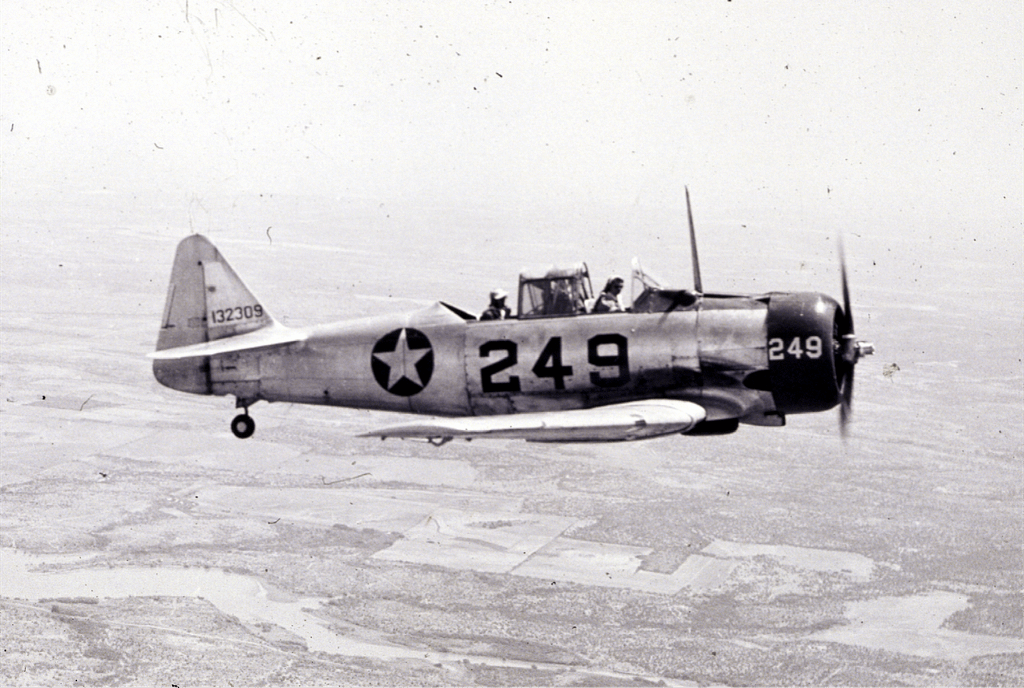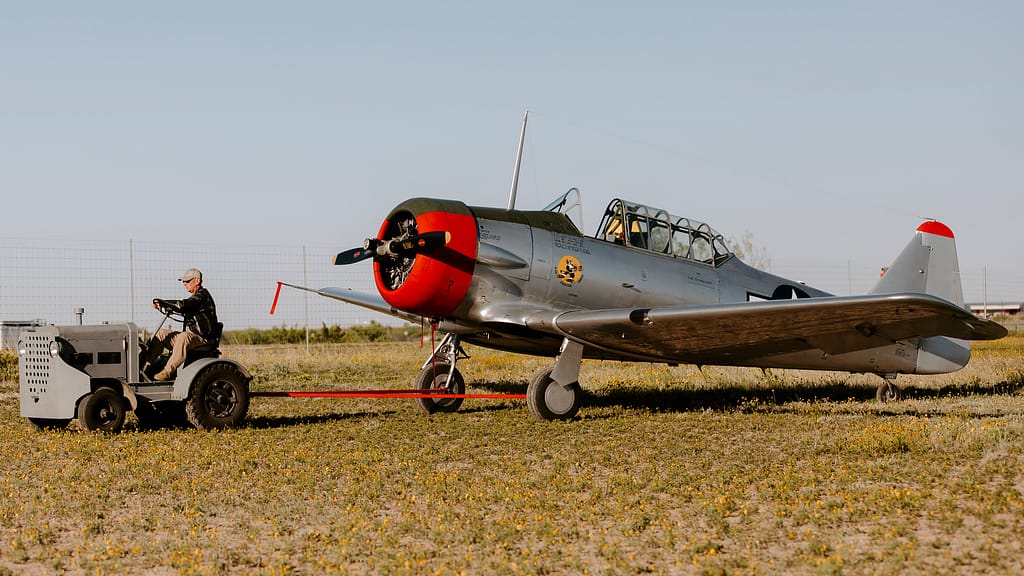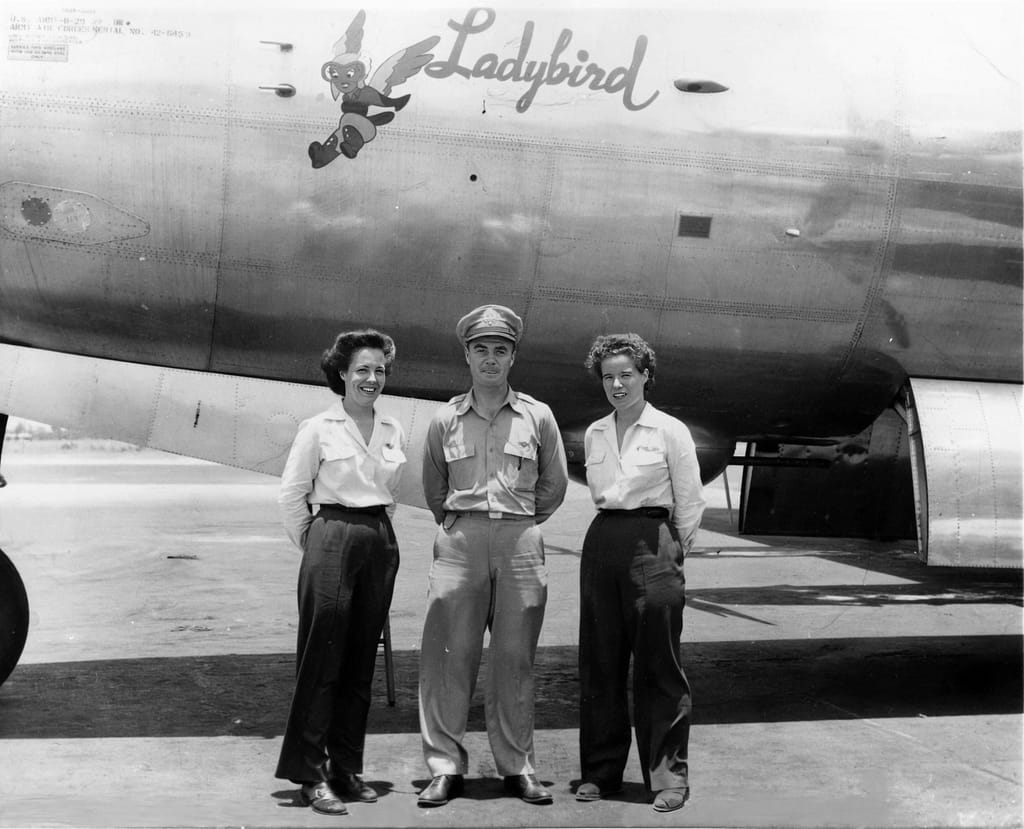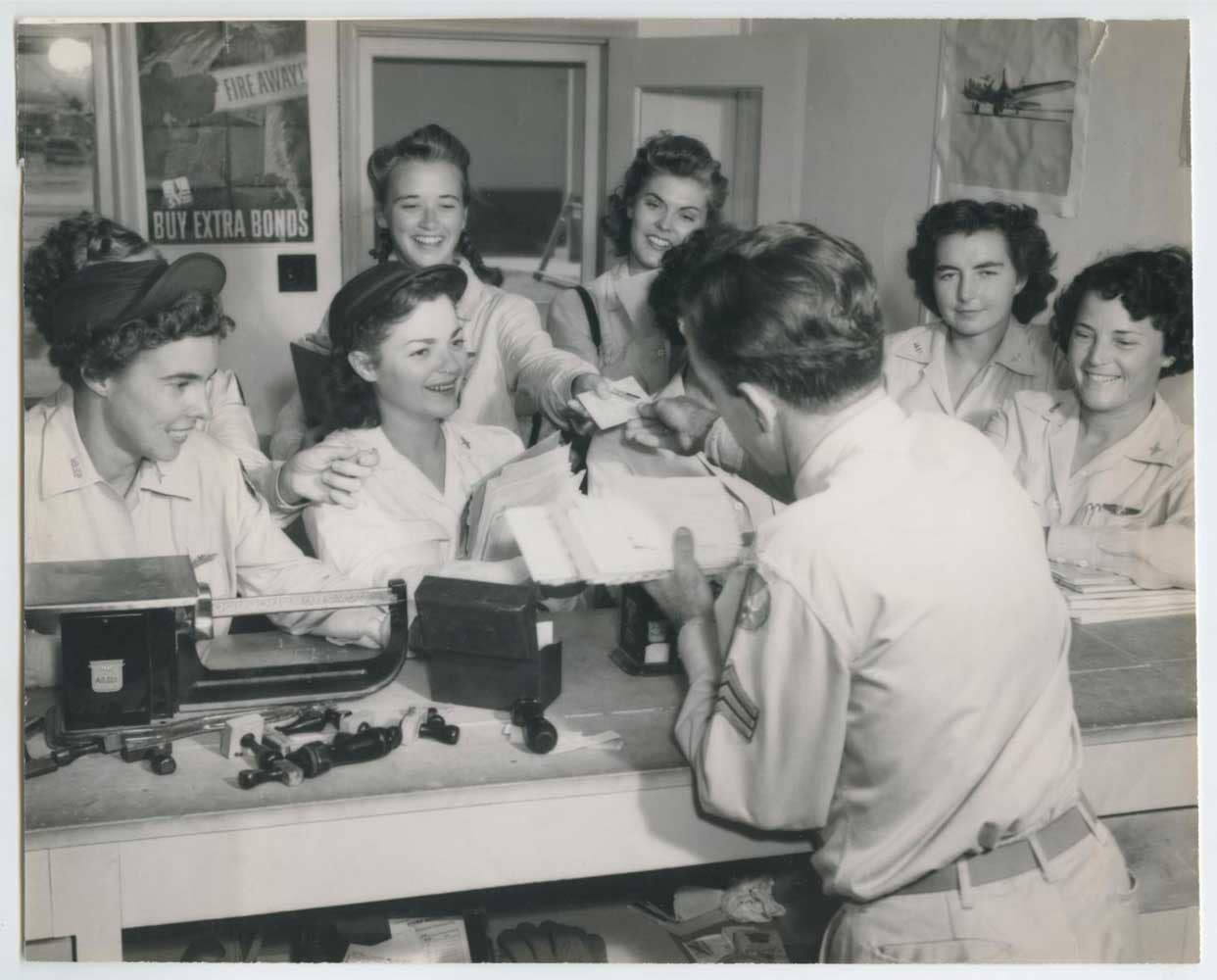On December 7, 1944, the Commanding General of the USAAF, Henry ‘Hap’ Arnold, addressed Class 44-W-10, the very last graduating class of WASP. During the course of his address General H.H. Arnold said, “I am glad to be here today and talk with you young women who have been making aviation history. You, and more than nine-hundred of your sisters, have shown that you can fly wingtip to wingtip with your brothers.”
General Arnold continued with, “Frankly, I didn’t know in 1941 whether a slip of a young girl could fight the controls of a B-17 in the heavy weather they would naturally encounter in operational flying…..Well, now in 1944, more than two years since the WASP first started flying with the Air Forces, we can come to only one conclusion – the entire operation has been a success….Certainly we haven’t been able to build an airplane you can’t handle. From the AT-6s to B-29s, you have flown them around like veterans.”

Photo by: National WASP WWII Museum

Photo by: National WASP WWII Museum
And, so, it was true, in the course of just over two years between September 1942 and December 1944, the WASP flew 60 million miles in every type of aircraft in the USAAF arsenal, from the very fastest pursuits (fighters) to the heaviest bombers.
As mentioned in General Arnold’s speech, three of the aircraft he noted stand out as legends in their own right. One of the most favorite of the WASP was the North American AT-6 ‘Texan’, an American single-engine advanced trainer used to train AAF pilots in the final phase of advanced techniques. Often called the ‘pilot maker,’ the AT-6 could roll, loop, spin, snap, and vertical roll. The T-6 trained more pilots than any other airplane in history, and every WASP who completed and graduated after successfully completing all three phases of training (Primary, Basic, and Advanced) flew the AT-6.
The AT-6, owned and exhibited by the National WASP WWII Museum, is an AT-6D, Army Serial No. 41-34166, built by North American Aviation at Grand Prairie, Texas. This aircraft served in World War II at Luke Field, Arizona, the largest single-engine advanced flight training school in the Army Air Forces.
The B-17 ‘Flying Fortress’ is the most well known American heavy bomber of World War II. Over 12,700 B-17s were built before production came to an end. Seventeen WASP were selected to train on the four-engine B-17. Of those 17, thirteen graduated from the difficult course and, primarily, served piloting the heavy bombers for gunnery training.

Photo by: National WASP WWII Museum

Photo by: United States Air Force
Four B-17 WASP appear in, perhaps, the most iconic photograph of the Women Airforce Service Pilots, as they stride confidently away from the B-17 ‘Pistol Packin’ Mama at Lockbourne AAF, Ohio. Seen in this photo are WASP Frances Green, Margaret Kirchner, Ann Walker, and Blanche Osborn. Standing just outside the frame of that photograph was B-17 pilot, Dawn Rochow Seymour, who in 2003 looked back upon and conveyed to me how she was stationed at Buckingham AFB in Florida flying the Fortress on daily missions to train gunners for the D-Day invasion and for duty in the Pacific. Dawn was later transferred to fly training missions in Roswell, NM, where she conducted flight tests on modifications made to existing aircraft. In all, between 1943 and 1944, she flew about 700 hours in the B-17!
Another outstanding operation accomplished by the WASP was in the B-29 Superfortress. After an experimental version of the airplane resulted in catastrophic engine failure in 1943 and a fatality, many male pilots in the AAF refused to fly the massive bomber. And despite a complete overhaul to correct design defects, engine fires remained a problem.
Col. Paul Tibbets seized the opportunity to prove the B-29 could be flown safely, believing that women were more than willing to learn to fly, test, and demonstrate the aircraft, essentially ‘shaming’ the hesitant male pilots into flying it. Tibbets recruited two WASP, Dora Dougherty and Dorothea Moorman, to be certified to fly the Superfortress. After some three days, Tibbets felt the two WASP were ready to demonstrate their control of the aircraft (Ladybird) on a tour, where Dougherty and Moorman ferried pilots, crew chiefs, and navigators from the heavy bomber base at Alamogordo, NM. They calmly handled engine fire issues during the demos and proved that the B-29 could return to base, even with significant damage. The demonstrations proved to be a huge success, fulfilling Tibbets’s vision of ‘showing up’ resistant male pilots and stopping their complaints about the aircraft.


Photo by: National WASP WWII Museum
After a few days of the demonstration, Air Staff Major Gen. Barney Giles brought them to an abrupt end, telling Tibbets that the women were “putting the big football players to shame.” Fearing negative publicity if there were an accident, the women were sent back to Eglin Field, Florida and never flew a B-29 again. Eventually, the Superfortress went on to play a decisive role in the Allied victory in World War II, and Col. Tibbets went on to pilot the B-29 ‘Enola Gay’ on its fateful and historic mission over Hiroshima on June 6, 1945, ultimately bringing the war in the Pacific Theater of Operations to an end.

Written by: Julia Lauria-Blum
Photos courtesy of: National WASP WWII Museum & United States Air Force
About Julia Lauria-Blum:
Julia Lauria-Blum earned a degree in the Visual Arts at SUNY New Paltz. An early interest in women aviation pioneers led her to research the Women Airforce Service Pilots of WWII. In 2001 she curated the permanent WASP exhibit at the American Airpower Museum (AAM) in Farmingdale, NY, and later curated ‘Women Who Brought the War Home, Women War Correspondents, WWII’ at the AAM. She is the former curatorial assistant & collections registrar at the Cradle of Aviation Museum on Long Island and is currently editor-in-chief for Metropolitan Airport News.
Julia is the proud mother of two daughters and a rescued Boxer. Her many interests include swimming, painting, traveling, aviation history, cooking, and storytelling.


